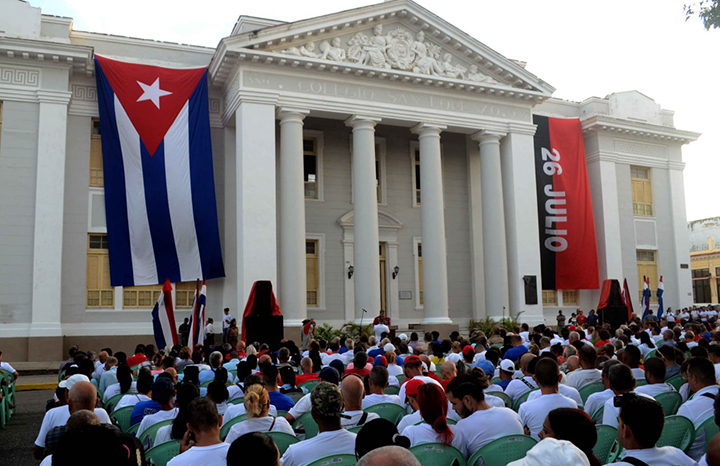
Cienfuegos, September 5.- The Commander of the Rebel Army Julio Camacho Aguilera, head of the Popular Armed Uprising of September 5, 1957, today sent revolutionary greetings to the people of Cienfuegos for the 67th anniversary of the heroic deed against the dictatorship of Fulgencio Batista.
During the solemn ceremony, held in the José Martí park of this city, Armando Carranza Valladares, first secretary of the Communist Party of Cuba (PCC) in the province, highlighted the message via telephone from the long-standing combatant who turned 100 years old in March, in addition of his perennial attention to the details of the commemoration, and the link between the leader of the July 26 Movement (M-26-7) and the protagonists of that uprising.
Camacho Aguilera not only prepared the uprising, he also managed to recruit young officers and soldiers, members of the Navy of the Batista dictatorship, who sympathized with the revolutionary cause, and assumed an important role in facilitating the access of the insurgents to the naval district. from Cayo Loco, where they extracted the weapons for the action.
José Ramón Monteagudo Ruiz, member of the secretariat of the Central Committee of the PCC and head of its agri-food department, delivered the replica of the Obelisk of September 5 to prominent leaders, professionals and workers from different sectors in the southern territory.
Before combatants of September 5, relatives of those killed in combat, and a large representation of the people, Anisley Cordero González, secretary of the Union of Young Communists, expressed the commitment of the newest ones to maintain the conquests that cost blood and lives so beardless like those who now continue the Cuban Revolution.
Many challenges require the efforts of this youth force, such as the promotion of food production - with the completion of the planting of five thousand hectares (ha) of rural crops, in addition to 350 hectares of potatoes -, investments in size and in housing, and improve service provision.
After the event, and presided over by a huge Cuban flag and images of the heroes and martyrs in the uprising, the pilgrimage advanced through the main streets of Cienfuegos to the Tomás Acea cemetery, several kilometers away.
That September 5, 1957, a group of young people from M-26-7, together with members of the Navy of Batista's Army, assaulted the military base located in Cayo Loco, equipped themselves with weapons and ammunition and confronted the forces. soldiers at various points around José Martí Park, including the San Lorenzo school, the City Hall, and the police station.
The young people intended to climb the mountains in the center of the country, and create a new combat front in support of the Rebel Army's struggles in the Sierra Maestra.
They did not achieve the military objective, but they shook the foundations of the dictatorship that saw how the monolithic unity of its military forces was belied with the participation in the uprising of several Navy officers, such as Dionisio San Román, military leader of the attempt and the that they vilely murdered.
The participation of the people of Cienfuegos in the events, some residents directly in the actions, others in support of the clandestine youth, and the unanimous rejection of a plethora of their children being massacred, gave the uprising a popular connotation. of that September 5th. (Text and photo: ACN)